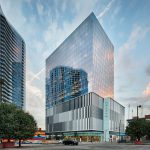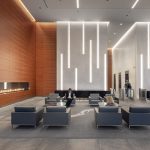Alvine Wins Durham Alumni Award
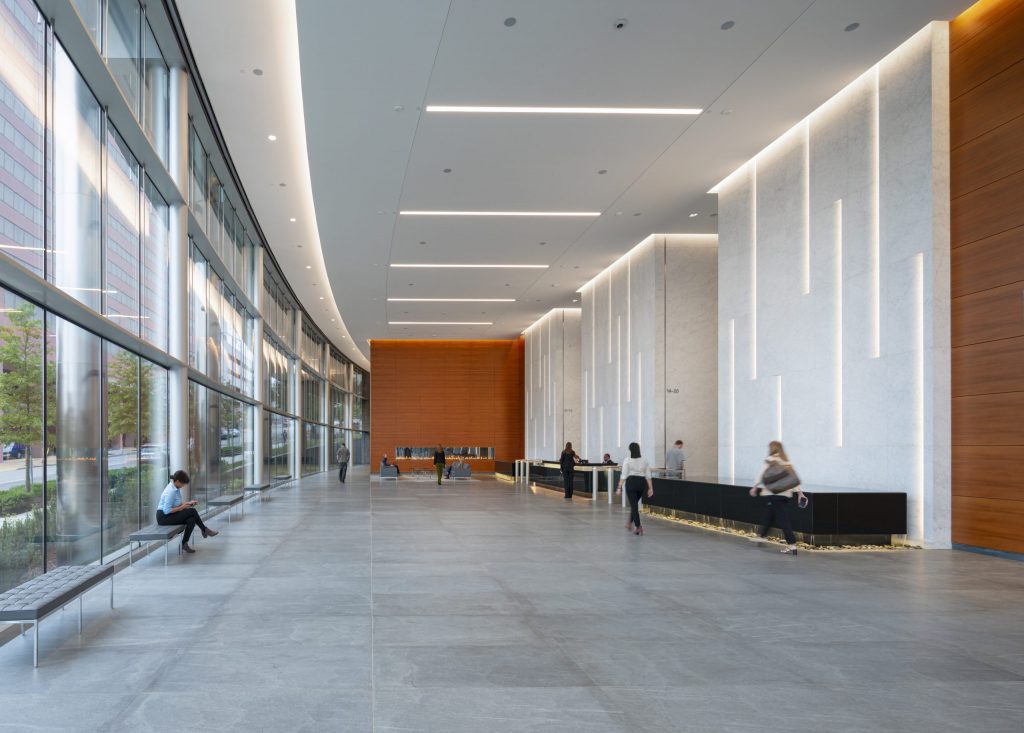
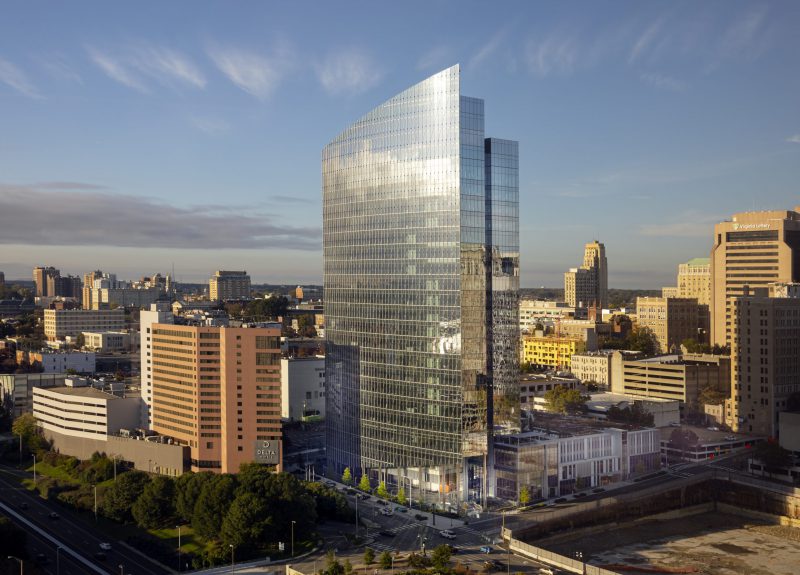
Benjamin Franklin famously said, “By failing to prepare, you are preparing to fail.” Today’s leaders take this to heart by continuing to prepare for the future as best they can. In the architecture, engineering, and construction industry, this often means making buildings as resilient and future-proof as possible. 600 Canal Place is one example where the geographical location of the project encouraged building owners to design extra redundancy to protect critical systems.
We are honored to announce that 600 Canal Place was selected as the winner of the interdisciplinary project category for The Durham School of Architectural Engineering and Construction Outstanding Alumni Award!
Engineering Resiliency
600 Canal Place is a 780,000 GSF corporate high-rise structure for Dominion Energy that includes amenities such as a fitness center, dining facility, conference center, office space, and a 630,000 GSF parking garage featuring a walkable green roof. Located in Richmond, Virginia, building designers needed to accommodate an aging city infrastructure and the threat of severe weather from the remnants of hurricanes. Because the building owner serves critical needs for nearly 7 million customers across 16 states, they cannot afford to have critical business operations and customer-dependent communication systems go down for any length of time. For this reason, resiliency and redundancy were of the utmost importance from the structure to the building systems.
The Alvine electrical team designed systems so that the building can be disconnected from the power grid and still be able to maintain business functions. To accomplish this, several layers of redundancy were put into place.
Should the power grid go down, or 600 Canal Place need to be disconnected for any reason, parallel diesel generators can provide power for the building for several days. Bulk fuel storage and a remote fuel filling station provide additional capacity should a utility shutdown last for longer than anticipated. In addition to the generators currently installed, additional building space was allocated for future generator installations should the need arise. Likewise, the building emergency system and pathways are set up so that generators can be added with minimal infrastructure updates.
Similarly, the Alvine mechanical team designed systems with multiple levels of redundancy so that if one system fails for any reason, another system can take over with no noticeable change. The cooling system for the building, for instance, has three levels of redundancy. The primary source of cooling for the structure is the chillers supplying a chilled water loop; however, should the chilled water fail, a separate glycol loop served by dry coolers on the roof will take over. In a worst-case scenario and the glycol system also fails, the exterior doors of critical areas were designed in such a way that they can be opened to allow a cross breeze to act as a last effort to keep sensitive systems cool. In the event of extended chiller plant down time, auxiliary connections into the chilled water loop were provided to allow supplemental chillers to be brought on site and connected to the system.
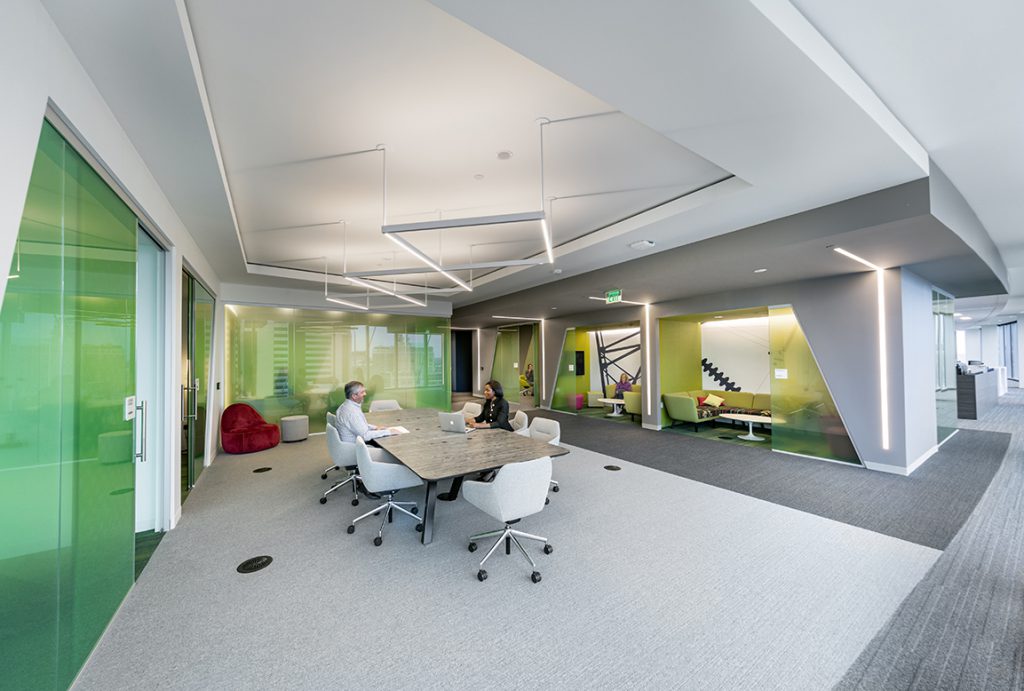
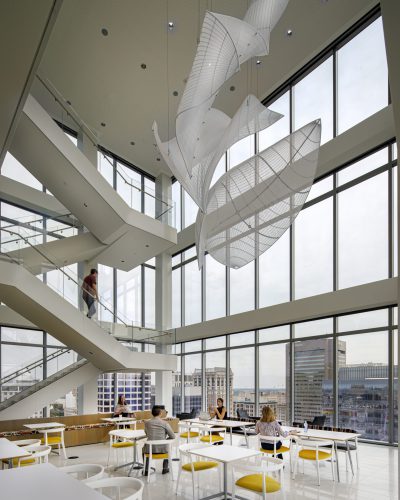
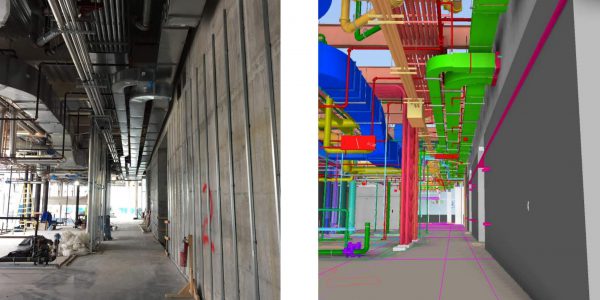
Design-Assist
The 600 Canal Place project embraced the future right from the very beginning by using a design-assist delivery method. Working closely with one another, the design team and contractors were able to solve potential issues on paper, rather than after materials had been purchased and construction begun. The design-assist delivery method not only allowed the project team to streamline the construction documents and construction process overall, saving the building owner money, but to provide innovative, integrated solutions. The additional communication and collaboration enabled all disciplines to share ideas on how more systems and elements could be seamlessly integrated.
Engineering Sustainability
Another consideration when planning for the future is how buildings can be more environmentally sustainable. 600 Canal Place achieved LEED Gold, showcasing its commitment to sustainability and a responsible use of resources. Many energy strategies were used to reach this goal, including lighting strategies resulting in lighting systems that use less than 50% of the code-allowed lighting power density (W/sf). The building owner’s commitment to energy even extends to their business initiatives. To support their electric vehicle initiative, the electrical team provided master planning for an electric vehicle charging expansion in the garage, which would increase stations from the current installation of 28 to the full 800-space fit out.
One way the mechanical systems are sustainable is through the use of a rare dual path air handling unit. Near the perimeter, air comes down from the ceiling to form an “air curtain” and prevent condensation from collecting on windows. In other areas the raised floor system allows air to come up from the underfloor air system. The underfloor air system also helps air pollutants naturally move toward the ceiling where they can be efficiently removed from circulation – resulting in cleaner, healthier indoor air. This is why underfloor air systems are becoming more and more popular in healthy buildings, which have been more and more in demand as we learn more about the built environment’s impact on human health.
Light also plays an important part in human health. An advanced daylighting study was performed on the lobby to determine what visual comfort impacts direct sunlight would have on the occupants, including both passersby and permanently-stationed security personnel. The goal was to provide an exact shading sequence that would allow the shades to prevent glare on the security desk, while also maintaining exterior views. The solution was an automatic shading system integrated with the overall building automation system. It adjusts throughout the day to keep direct sunlight off of the security desk while keeping the shades as high as possible for as long as possible to maximize exterior views, connecting the interior with the outdoors.
600 Canal Place also applied healthy-building thinking with the 100,000 square-foot green roof above the parking garage. This space features native plants and walkable paths that encourage building occupants to take a mental health break to explore nature and get some physical exercise. In order to make the space safe, building systems such as fire alarm, security, and water drainage needed to be well integrated within the architecture. In the case of the water drainage system, the design was so well integrated – concealing drains within planters, pavers, and other outdoor features – that in the finished space, there are no visible drains.
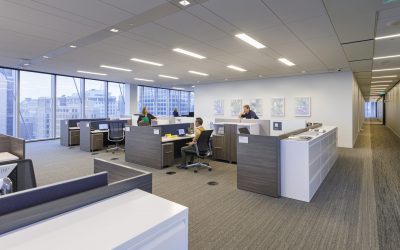
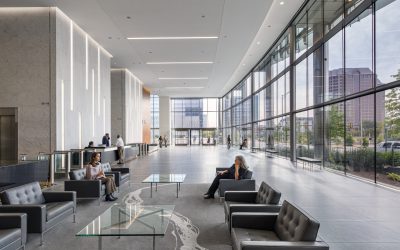
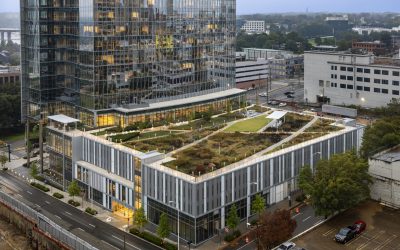
For more information about the project, check out our portfolio section. For the full list of winners, check out the Durham School of Architectural Engineering & Construction’s website!


